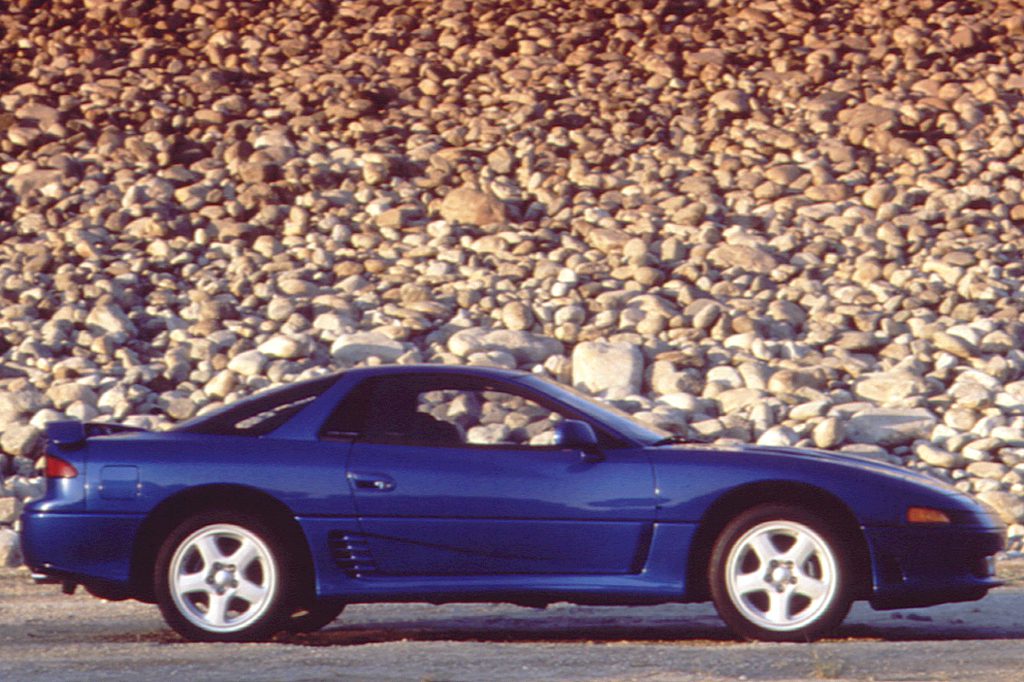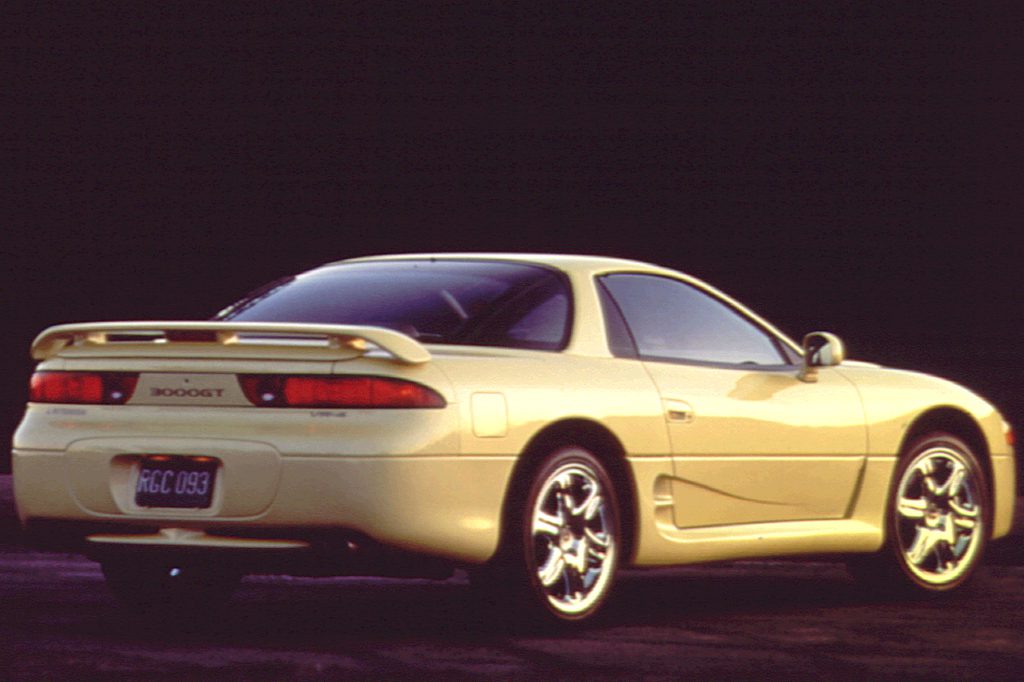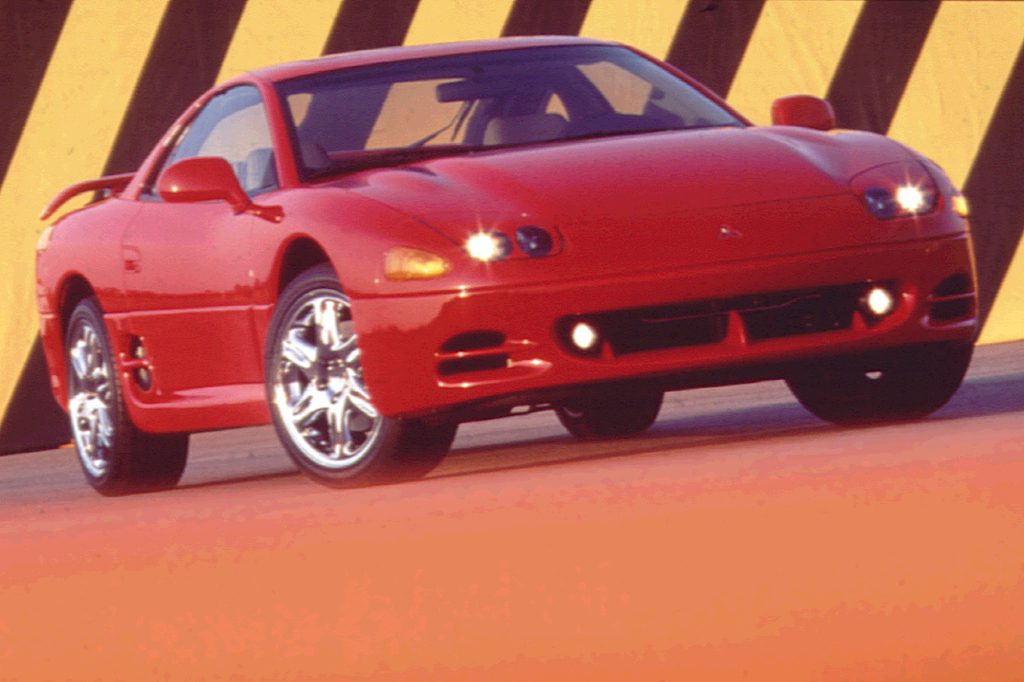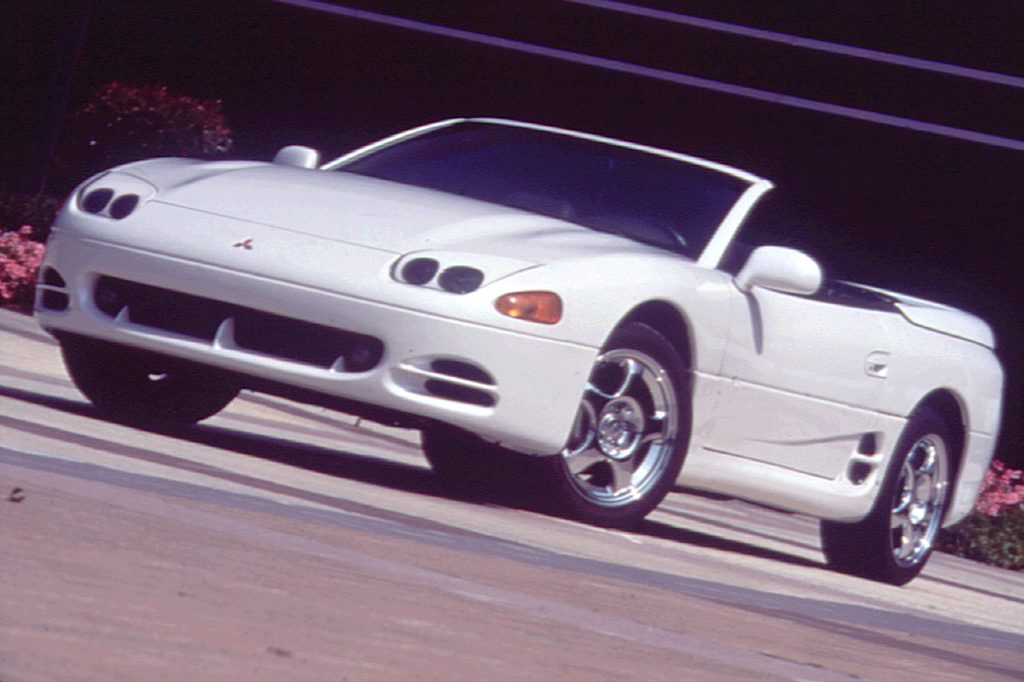| Sporty/performance car; Built in Japan |
|
|
| Good condition price range: $1,600 – $16,000* |

1991 Mitsubishi 3000GT VR-4 2-door coupe

1995 Mitsubishi 3000GT VR-4 2-door coupe

1996 Mitsubishi 3000GT VR-4 2-door coupe

1996 Mitsubishi 3000ST Spyder VR-4 2-door convertible

1997 Mitsubishi 3000GT VR-4 2-door coupe
| Pros: |
|
| Cons: |
|
A VR-4 delivers outstanding performance and all-wheel-drive action, but you pay a penalty in its stiff ride, as well as the high price. Base and SL models are more reasonable alternatives.
Overview
Mitsubishi entered the sports-car arena with its new 2+2 sport coupe. The Dodge Stealth was mechanically identical. Base and midrange 3000GT models got a twin-cam, 24-valve 3.0-liter V6, rated at 222 horsepower. The flagship VR-4 had 4-wheel steering, permanent 4-wheel drive, and a twin-turbo engine with dual intercoolers that made 300 horsepower. The VR-4 came only with 5-speed manual shift, but others might have an electronic 4-speed automatic transmission. A driver-side airbag was standard. Four-wheel disc brakes were standard across the board, and antilock braking was standard on the SL and VR-4 (optional on base coupe).
Yearly Updates
| 1992 3000GT Except for three new paint colors, nothing changed for ’92 in Mitsubishi’s sport-coupe group. |
| 1993 3000GT Standard leather upholstery went into the VR-4 for ’93, and the base coupe added some comfort features. Chrome-plated alloy wheels were offered for the first time, as was a CD changer. |
| 1994 3000GT Dual airbags were installed in 1994, as the Mitsubishi sports coupes got a modest facelift. The VR-4’s engine got a boost to 320 horsepower, along with a switch from 5-speed manual shift to a 6-speed. All models wore a reshaped nose with four exposed headlamps, which replaced hidden flip-up units. |
| 1995 3000GT Costly retractable-hardtop Spyders debuted in spring 1995. The top was an articulated design, made of plastic composites, and production was very limited. |
| 1996 3000GT Few changes marked the coupes or the Spyders for ’96. |
| 1997 3000GT Dodge Stealths dropped out of the market after 1996, but the Mitsubishi 3000GT carried on with minor styling touch-ups. A lower-priced base coupe joined the 3000GT lineup, carrying a single cam Mitsubishi-built 3.0-liter V6 that produced 161 horsepower. The dual-cam engine in the SL lost four horsepower. |
| 1998 3000GT 3000GT sees no change for 1998. |
| 1999 3000GT 3000GT received cosmetic changes front and rear and VR-4 models got a huge rear spoiler. Slow sales would eventually kill the Mitsubishi sports car for the year 2000. |
